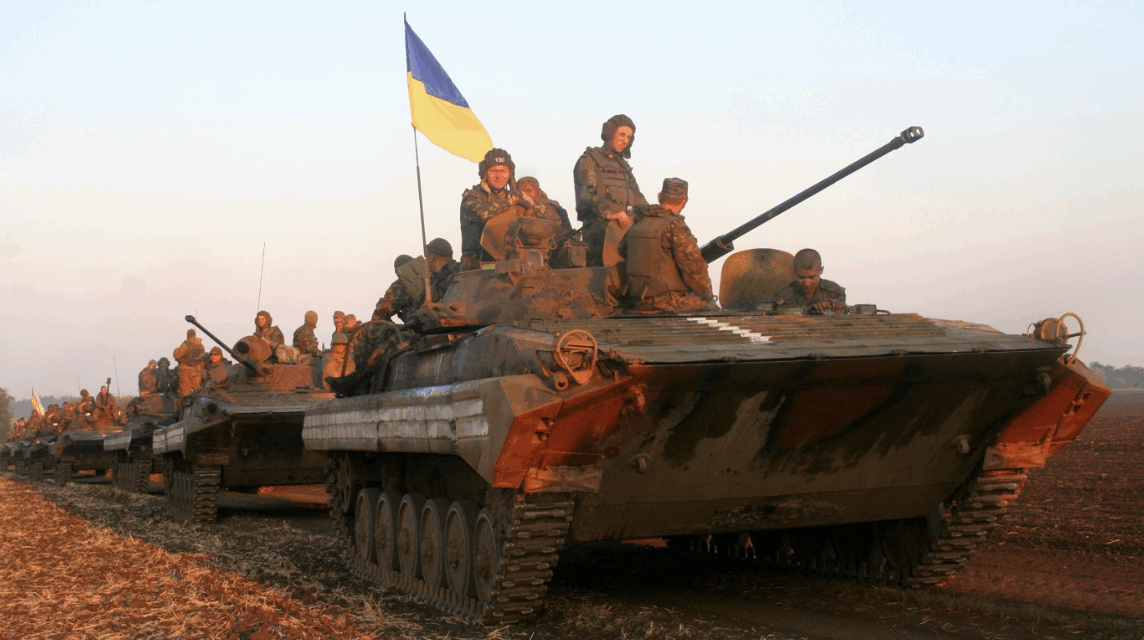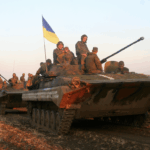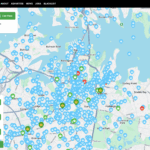From the thousands of deaths to the shelling of chemical plants and eradication of ecosystems caused by missiles and oil spills in the Russian-Ukraine war, an invisible crisis is set to haunt Ukraine and the world for decades to come: ecocide.
Ecocide is the large-scale destruction of the environment caused by human actions, threatening ecosystems and the human communities that depend on them for survival.
Russia’s invasion of Ukraine is a prime modern example of how ecocide impacts both communities and ecosystems. Russia’s military activities are the main drivers of exacerbating the environmental degradation in the Black Sea region, a hub of fragile ecosystems on which many European countries rely on.
“The militarisation of Ukraine has led to many toxic compounds starting from missile fuel to to the greatest oil spill in all of the history of the Black Sea,” said Pavel Gol’din, professor and lead researcher at Ukraine’s Schmalhausen Institute of Zoology.
Gol’din’s warning underscores the scale of ecological collapse unfolding across Ukraine’s land and waters.
Key events, such as the destruction of the Kakhovka Dam, the cause of which is disputed, in Kherson Oblast in 2023 and the sinking of Russia’s “shadow fleet” oil tankers in 2024, have directly worsened marine degradation in the Black Sea.
The Black Sea
Central to this ecological crisis is the Black Sea, a unique inland sea linking southeastern Europe and western Asia. It is most notably characterised as an important ecosystem hub with a complex interplay of freshwater and saline waters.
Also due to its high river catchment basin, it serves as an important water source for five major European rivers.
The Black Sea’s ecological importance is evident as its ecosystems within the region provide the conditions and routes needed for nesting, migrating and wintering thousands of East European seabirds and marine mammals such as harbour porpoises and common dolphins.
Kakhovka Dam destruction
Built by the Soviet Union between 1950 and 1956, the Kakhovka Dam was part of a hydroelectric power station and played a pivotal role in Ukraine’s infrastructure and economy.
It supplied water for industry, irrigated agricultural land, and provided drinking water to more than 35 million people, especially in low-water regions such as eastern and southern Ukraine – including Donbas Oblast and the Crimean Peninsula.
For the past 68 years, regions such as Kherson and Zaporizhzhia Oblasts relied heavily on the dam and its reservoir for drinking water and irrigation.
In 2021, these regions produced around two million tonnes of grain and oilseeds, much of it was exported to Africa and Southeast Asia.
After the dam’s destruction, Ukrainian authorities estimated that around 1.5 million hectares of agricultural land would require at least seven years to restore irrigation.
Pavel Gol’din warned: “Another important consequence is the degradation of the irrigation system, which is bad for agriculture, bad for sustainability of the natural water systems.
“The deprivation of water sources will impact nature and communities long term”
The ecological fallout extends beyond agriculture. The dam’s collapse triggered a biological invasion, spreading non-native species through flooding and water discharge.
Ukraine’s hydro energy co says Kherson’s Nova Khakova dam is destroyed and can’t be repaired.
Waters expected to reach critical levels at 11am (2 hours). Around 16k people are being evacuated from the critical zone. 80 settlements thought to be at risk. pic.twitter.com/2hXvWa1qOk
— Liz Cookman (@liz_cookman) June 6, 2023
“Long lasting consequences such as bio invasion following the Kakhovka Dam disaster like algae blooms, the discharge of fresh water and so on,” Gol’din said. “Many species have decreased their population or even exterminated.”
An estimated 16.4 square kilometres from the drainage of the Kakhovka Reservoir, flooded downstream communities and flowed into the Black Sea region.
This massive discharge polluted freshwater and marine environments, disrupted salinity balances, and introduced invasive species and accelerated ecological degradation across the wider basin.
The destruction of Kakhovka Dam illustrates the ecological cost of war, not just the immediate devastation, but long-lasting damage to ecosystems, agriculture, and communities.
Together with oil spills and ongoing military activities, these crises show how the impact of war causes ecocide – a catastrophe that reverberates far beyond Ukraine’s borders.
Russia’s shadow fleet
Along with the growing invasive species in the Black Sea, oil pollution is emerging as the greatest ecological threat to the Black Sea.
Central to this issue is Russia’s so-called ‘shadow fleet’ – a collection of aging oil tankers used to circumvent global sanctions and continue crude exports to China, India, and Middle Eastern buyers.
“The Black Sea is continuously polluted by oil products,” said Eugene Simonov co-founder of the Ukraine War Environmental Consequences Work Group.
“The Kerch Strait, where the catastrophe began, is already one of the region’s most polluted areas because of intensive oil transshipment.”

Volgoneft-212 and Volgoneft-239 Russian Oil Tankers Sinking in Kerch Strait, 15 December 2024. Source: unn.ua.
After Russia’s invasion in 2022, there was a radical reduction of demand in pipeline oil by European countries due to the sanctions imposed to limit Russia’s ability to finance its war.
Forcing Russia to increase its oil shipments, using small river tankers for sea voyages, in order to make up for their losses in the European markets.
In December 2024, two of the Russian tankers were caught in a storm in Kerch Strait and broke in half.
Reports indicate that between 2,400 and 8,000 metric tons of heavy fuel oil spilled into the Black Sea – specifically Mazut oil.
Mazut (M-100 blend) is a residual ‘bottom of the barrel’ product of crude-oil refining, widely produced in Russia. Its toxicity and persistence make it especially destructive to marine life.
Spills from an type of oil product result in an oxygen-impermeable film at the sea’s surface, which prevents oxygen exchange and affecting the respiration in aquatic organisms and can result in significant changes in the food chains and disrupt the delicate balance of marine ecosystems in the Black Sea.
Simonov further described the scale: “They cover more than one thousand kilometres of the seashore. Some kind of oil products have been documented anywhere from Odessa (Ukraine) to Tulcea (Romania), near the Danube Delta.”

Oiled Shorelines in the Black Sea Region from Russian Oil Tankers, December 2024. Source: Ukraine War Environmental Consequences.
The immediate effects have been visible along Ukrainian coastlines. Oil exposures cause acutes intoxication, burns to skin and mucous membranes, and respiratory distress in marine mammals such as dolphins, as noted by Gol’din.

Dead Azov-Black Sea Harbour Porpoise (locally known as “Azovka”), December 2024. Source: Oil Spills in the Black Sea Telegram Channel.
But the worst consequences are long term. Prolonged exposure to oil leads to the accumulation of toxins, which weaken cetacean immune systems, foster disease development, and risk triggering infectious outbreaks among already vulnerable populations.
This is further supported by Eugene Simonov, who said: “There was increased incidents of deaths among dolphins and porpoises, and it had a major impact on bottom dwelling animals and still has. However, it’s very far from the end of the story.”
Areas most affected by the spread of mazut oil include critical ecosystems, protected areas, and major tourist and recreational coastlines.

Biodiverse Areas Impacted by Russian Oil Spills. Source: Ukraine War Environmental Consequences.
The Kerch Strait, the area where the Russian oil tankers sank, is a critical habitat for native cetacean species in the Black Sea, including the common bottlenose dolphin (Tursiops truncatus), “Azovka” harbor porpoise (Phocoena Phocoena) and common dolphin (Delphinus delphis).
War erases more than just cities and lives. It erases the invisible networks of water, soil, and species that sustain entire regions.
In Ukraine, the destruction of dams and the slicks of spilled oil have turned the Black Sea into a mirror of war’s silent and deadly toll.
Long before the last shot is fired, and long after, the echoes of ecocide will continue to remain, where ruined harvests, loss of native species, rivers that no longer flow the same way.
The true cost of this war will be measured not only in human lives, but in the future of the land and sea that once sustained them.
Main image by Wikimedia Commons.




























